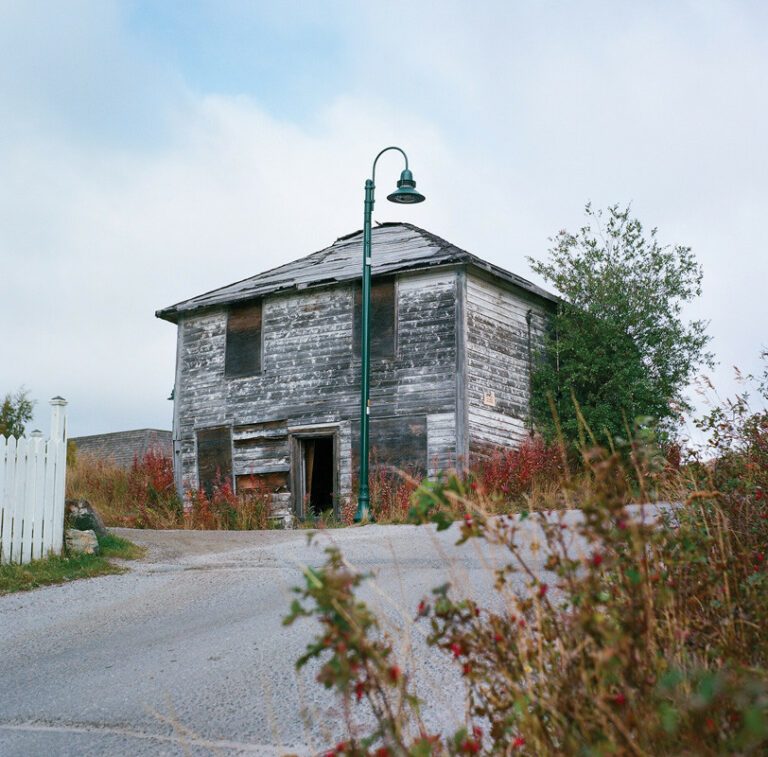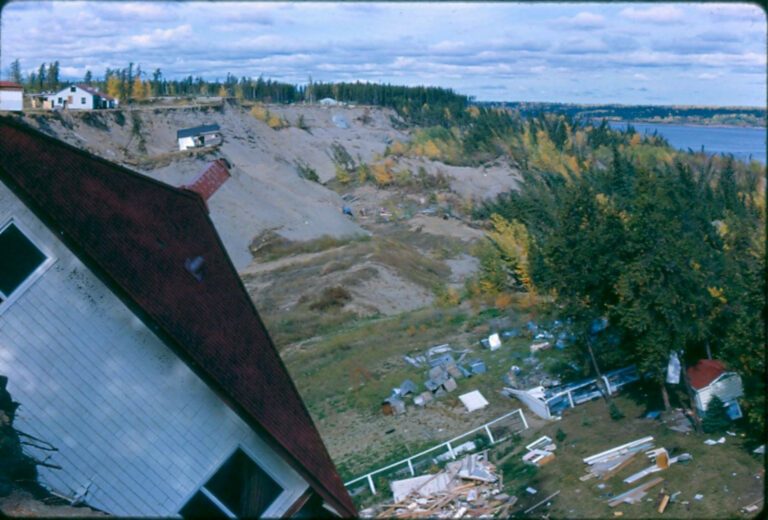With plenty of great local ingredients to work with, homebrew culture is on the rise
by Janna Graham
By the time I meet my fellow revellers in the Wood Yard, it has been dark for hours and the shacks are puffing smoke. The captain had already sponged out the canoe and is now loading it down with six crates of his homebrew: Irish stout, India pale ale and pilsner. Three of us swing into the boat and begin the paddle towards Oktoberfest.
In Germany, revellers guzzle beer brewed within Munich city limits. Similarly, at the Yellowknife version, revellers imbibe ale brewed with Great Slave Lake water and other locally harvested ingredients – crowberries, birch syrup, boysenberries, raspberries, and, when the harvest is plentiful, cranberries. In Germany, I imagine stumbling out into the city streets, sloshing my overflowing stein. In Yellowknife, Oktoberfest is about a 10-minute paddle from the Government Dock, so I’m patiently waiting to fill my cup.
The lake is calm and a full moon guides our way. We paddle without speaking, silently anticipating the exotic-yet-familiar tastes that lay just ahead.
When we pull up to the bank in front of the cabin, it’s already lined with boats and canoes. The din of the party floats down and we quickly unload the crates of beer with assembly-line stealth and proceed up the hill – where we are greeted by a site beyond our wildest dreams.
There is a table – or rather a series of tables – strung together in the middle of the yard.
Along more than 40 feet are more than 50 different flavours of homebrew, all in distinctive green Grolsch bottles. There are pilsners and stouts, lagers and ales. They are light and dark, intense and mellow. There is an apple cider making the rounds. An over-carbonated pilsner explodes in my face. And, while I take my time at the table, slowly sampling and savouring the diverse offerings, I keep coming back to one particular beer – a crowberry birch stout brewed by Craig Scott.
With a slight sweetness, a tinge of acidity and a fire-in-your-belly warmth, this is the clear winner in my books.
In front of every batch of brew is a bucket in which taste testers (while still somewhat sober) toss different coloured poker chips to vote for their first, second and least favourite beers, as contributed by five brewers.
One of the beers, brewed by Oktoberfest founder Mike Mitchell, is eventually voted both worst and best. It is an incredibly hoppy ale, comparable to a bitter piece of rope.
Hops are an aromatic and tangy tasting flower (that can be grown in Yellowknife, believe it or not) used in beer brewing to balance the sweetness of malt. The longer they’re left in the brew, the more bitterness results.
Mitchell and his wife, Andrea Bettgar – whose favourite beer is made with Earl Gray tea – started Oktoberfest when they lived in Hay River. Mitchell had been harvesting berries for beer brewing and wanted to share the wealth with his friends. Inspired by garden harvest parties when they moved to Yellowknife, Mitchell wanted to throw a kind of bottle harvest party and have “one last blast” before freeze up. The Oktoberfest party has become the event of the year for Yellowknife’s small-but-growing crowd of homebrewers.
For Mitchell, brewing beer is a marriage between “self-sufficiency and cheapness.”
“I’m personally affronted by the price of beer around here, knowing that it’s about 90 per cent water. I like to do things myself,” he says. “And on an ecological front, it seems ridiculous that we’re shipping water around the globe when you can make it yourself and use some of the cleanest water in the world which is just out of the lake here.”
On the boat ride back to the city, with the taste of crowberry and birch on my tongue, I think about what it takes to be a beer brewer. No one wants to end up with a batch of beer that polite friends sip and suffer though. Yet, if Oktoberfest is any testament, home brewing is a craft that’s not unlike learning to knit, gardening or making bread. With a bit more experimentation, and a handle on the wilds of the fermentation process, I could show up next year with a few crates of my own.

photo Janna Graham
Brew Tips Learned the Hard Way
I’ve developed a talent, without any real conscious effort, of showing up once all the work’s done. I’m that person who sidles up alongside a crew and offers an ever helpful, “What can I do?” genuinely surprised when I’m told that everything’s done. My intentions are good but my timing leaves something to be desired. My relationship with home brewing had been kind of like that, always the drinker, never the brewer.
But this fall, I tried making my own ale. For years, I’ve loved the idea: fermenting yeast, mixing malt with water and racking the brew into a huge glass carboy. After a month of waiting, what could be better than sharing a bottle of homemade beer with beloved friends? Unfortunately my brew, left to ferment with wild abandon, tasted like a cross between vinegar and gasoline. One friend spit it out as soon as it touched his lips.
And so, I went to YK Oktoberfest fest empty handed. Since then, I’ve consulted with local beer brewers. Here’s what I’ve learned:
• Pick up your beer kit at your local grocery store (the Co-op carries beer-making supplies) and read the instructions.
• Wait for it. It takes about 2 hours to actually “brew” the beer. The beer ferments for about a week, but use a hydrometer to determine when it has stopped fermenting. It also takes a couple hours to bottle your brew. Finally, it takes another 2-3 weeks for your beer to carbonate. Total labour: 4 hours. Total time to make drinkable beer: 4-6 weeks.• Temperature is important. If the water is too cold, fermentation won’t happen. If it’s too hot, you’ll kill the yeast (and fermentation won’t happen). Get a thermometer and check the instructions on your beer kit.• If it tastes like vinegar: chances are, wild yeast or bacteria have contaminated the beer. It was (as in my case) likely left to sit in the bucket too long.• Exploding or over-carbonated bottles: too much sugar was added before bottling. Watch your eyes!• The basic equipment: a food-grade plastic bucket or glass carboy; a siphon hose to transfer fermented beer to bottles; an air-lock and stopper to prevent outside air from getting into the fermenter and contaminating beer; beer bottles and a capper.• There are lots of resources online and, even better, keen local brewers who will happily regale you with tales of how make that perfect ale.






